
The Economic Survey for the current fiscal, while accepting that demonetisation has had an adverse impact on the Indian economy, argued that public investment would be a critical factor for the economic turnaround.
The survey did, however, point out that this would "depend on the stance of fiscal policy next year, which has to balance the short-term requirements of an economy recovering from demonetisation against the medium-term necessity of adhering to fiscal discipline".
The real interest in the Union Budget 2017-18 was on the stance that Finance Minister Arun Jaitley would take - whether he would take bold measures to raise public investment, or whether he would fall prey (yet again) to fiscal conservatism by sticking to the deficit target of 3% or thereabouts.
The strong support for the latter option by the NK Singh Committee, which reviewed the Fiscal Responsibility and Budget Management Act, meant that limiting the fiscal deficit became the sole reference point for Budget 2017-18.
But, even if the fiscal prudence was to be the by-word, there was no reason for the government to feel the resource crunch, especially because the Finance Minister seems to have finally understood that there is large-scale tax evasion by both the corporate sector and individuals.
Moreover, one of the major successes of demonetisation that the government claims is that it has forced those stashing ill-gotten incomes to bring it out in the open.
The Finance Minister informed us that "deposits between Rs 2 lakh and Rs 80 lakh were made in about 1.09 crore accounts, with an average deposit size of Rs. 5.03 lakh".
He further informed that "data mining will help us immensely in expanding the tax net, as well as increasing the revenues, which was one of the objectives of demonetisation".
The puzzle
This is where the puzzle lies: when the Finance Ministry is on fairly firm ground to make an assessment of the extent of tax evasion, why, then, is the direct tax revenue in 2017-18 projected to increase only marginally as compared to that projected for the current year?
This is something that the Finance Ministry would have to explain, for inability to garner additional resources could stymie the structural transformation across sectors that the Indian economy needs most urgently.
Support for agriculture and MSMEs
Agriculture and Micro, Small and Medium Enterprises (MSME) are the two sectors of concern for the Indian economy, and it seems that the Finance Ministry has taken some measures to support them.
An increase in agricultural credit has been projected in 2017-18 and has been fixed at Rs 10 lakh crores, the highest level ever. The sop for the MSME sector is in the form of lower income tax for companies with annual turnover up to Rs 50 crore.
Are these sops enough for the two sectors to be up and running, especially after they have suffered the most from demonetisation?
Challenge for small farmers
The biggest challenge that small farmers face is from the marketplace, where they face untold exploitation at the hands of middlemen. Not a single government in the past seven decades has given any serious consideration to this issue, and unfortunately, the present government has continued with this dismal tradition.
The earlier NDA government had made an attempt to amend the Agricultural Produce Market Committee (APMC) Act, but the state governments did not take any note of it.
The present government, which has often spoken of cooperative federalism as the basis of state policy, could have given this term an operational meaning by pushing the states to move proactively to address crying needs of the farmers.
Besides getting rid of the APMCs, both the Centre and the states need to think about creating the infrastructure for the farmers to get remunerative prices for their produce by taking responsibility of the marketing themselves.
Better connectivity with the villages, which the Finance Minister assures will come from the Pradhan Mantri Gram Sadak Yojana, is but one part of this transformation of the agricultural marketing system that is urgently required.
Creating storage facilities and other pieces of infrastructure have proved to be serious impediments, for which proactive government support is needed. When these basic infrastructural needs are staring in the face, it is somewhat ironic that the only real proposal on agricultural marketing that the Finance Minister has made in his Budget speech is strengthening of the National Agricultural Marketing (e-NAM), a portal that informs the farmers about the markets and marketing.
Adversity faced by MSMEs
The MSME sector, the backbone of the manufacturing sector in India, has forever complained of the adverse conditions it faces in the credit market.
Having faced the brunt of demonetisation, the credit needs of this sector at the present juncture can be well imagined.
From the past experiences of this sector, it made eminent sense for any government to treat it as a priority sector, and to extend similar benefits that have now been extended to the agricultural sector.
This government, with its emphasis on 'Make in India' and creation of employment opportunities, should have taken steps to support the MSME sector, which, as the government is well aware, has the maximum potential for creating jobs.
The fact that higher incomes in the hands of the citizens of the country results in higher GDP growth is a truism that governments in India are taking far too long to understand.
Stimulating the key sectors seemed imperative for GDP growth, especially because India will have to rely increasingly on domestic impulses, now that the global economy is facing an uncertain future.
The Economic Survey made a mistaken assumption that the global economy can push the GDP by one percentage point.
The Budget would have done well not to get trapped in this fallacy.
Edited by Shreyas Sharma
First published: 14 February 2017, 6:57 IST


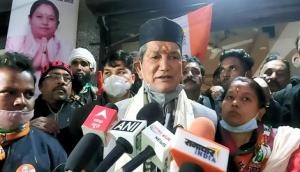
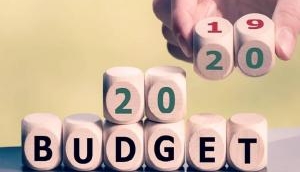
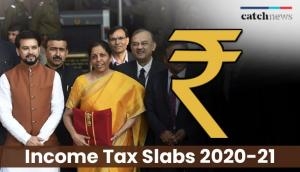
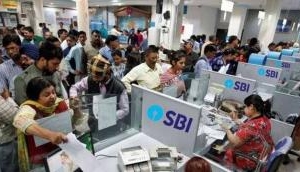
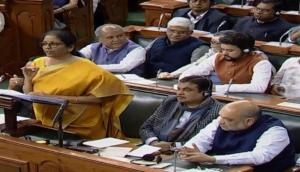
![BJP's Kapil Mishra recreates Shankar Mahadevan’s ‘Breathless’ song to highlight Delhi pollution [WATCH] BJP's Kapil Mishra recreates Shankar Mahadevan’s ‘Breathless’ song to highlight Delhi pollution [WATCH]](https://images.catchnews.com/upload/2022/11/03/kapil-mishra_240884_300x172.png)

![Anupam Kher shares pictures of his toned body on 67th birthday [MUST SEE] Anupam Kher shares pictures of his toned body on 67th birthday [MUST SEE]](https://images.catchnews.com/upload/2022/03/07/Anupam_kher_231145_300x172.jpg)






